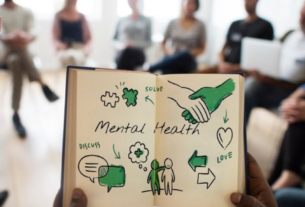Beauty brands are victimizing everything from computing (AI) to increased reality (AR) to keep their customers engaged during a ferociously competitive market. However, do such innovations work or are they merely selling hype? Check out our analysis of trending technology used in the beauty industry.
Smart skincare tools
Would you trust a computer to rate your skin? The HiMirror, a “smart mirror” made by Taiwan’s New Kinpo Group, does just this.
It takes a photo of your face every time you log in and scans it for wrinkles, red spots, pores, fine lines, and brightness levels. It then rates these factors from “good” to “poor”, and sends you personalized tips and product recommendations.
Put the Image from https://www.himirror.com/en-US/ site. [Give resource credit]
Olay offers a similar smartphone service called Skin Advisor, while its new app “FutureYou Simulation” enables users to visualize what their skin and face will look like in the future using AR.
Some skincare experts warn that, without giving users more context about their skin scores, such products could unnecessarily harm people’s self-esteem if the feedback is negative.
Personalization and AI
According to Mr. Balooch: “50% of women complain that they can’t find the right shade of foundation for their face, and women with darker skin tones have been crying out for more choice.”
According to market research firm Mintel, demand for personalized cosmetics is growing fast. Nearly half of the consumers like the idea that a beauty product is personalized especially for them, and a third think such products give better results,
But at £85 for a 30ml bottle, Le Teint Particulier is not cheap, and some have warned that the high price of personalized cosmetics stops them from being inclusive.
Hi-tech In-store Experience
In-store digitization is nothing new. But recently, there have been some innovative technology implementations that are truly transforming the in-store customer experience for beauty retail. Sephora is being widely lauded as the pioneer of several innovative in-store initiatives to offer a seamless physical-digital experience. Some of these initiatives include color IQ facial scanning to help customers find perfect skin tone matches, interactive screens for product suggestions, makeup tips, and even more.
Virtual ‘try on’ apps
As we do more of our shopping online beauty brands are increasingly using augmented reality (AR) to enhance the experience.
Improvements in image recognition and face tracking mobile application developed tech are making these digital overlays more accurate. It can also walk you through make-up tutorials digitally, and colour match shades to your skin.
Printed make up
Will we ever see robots put on our make-up for us? Several gadgets released in the last few years suggest we might. Imagining where the trend could go, design agency Seymour Powell has unveiled a printer concept that would allow make-up looks seen online to be downloaded and printed directly onto the face.
Combining 3D-printing, facial recognition technology, and AI-powered image analysis, the Élever would allow brands and influencers to sell make-up looks directly to consumers.
3D or ‘e-make-up’
3D is one of the latest beauty tech trends that does not involve wearing real cosmetics, but it gives you a real feel.
Inspired by the craze for AR filters on Snapchat and Instagram, “e-make up” artists enable you to download outlandish make-up looks to enhance your digital self.
Different technology used in the beauty industry is helping businesses attract customers. It may be difficult in the beginning, but it will be surely helpful at one stage.




